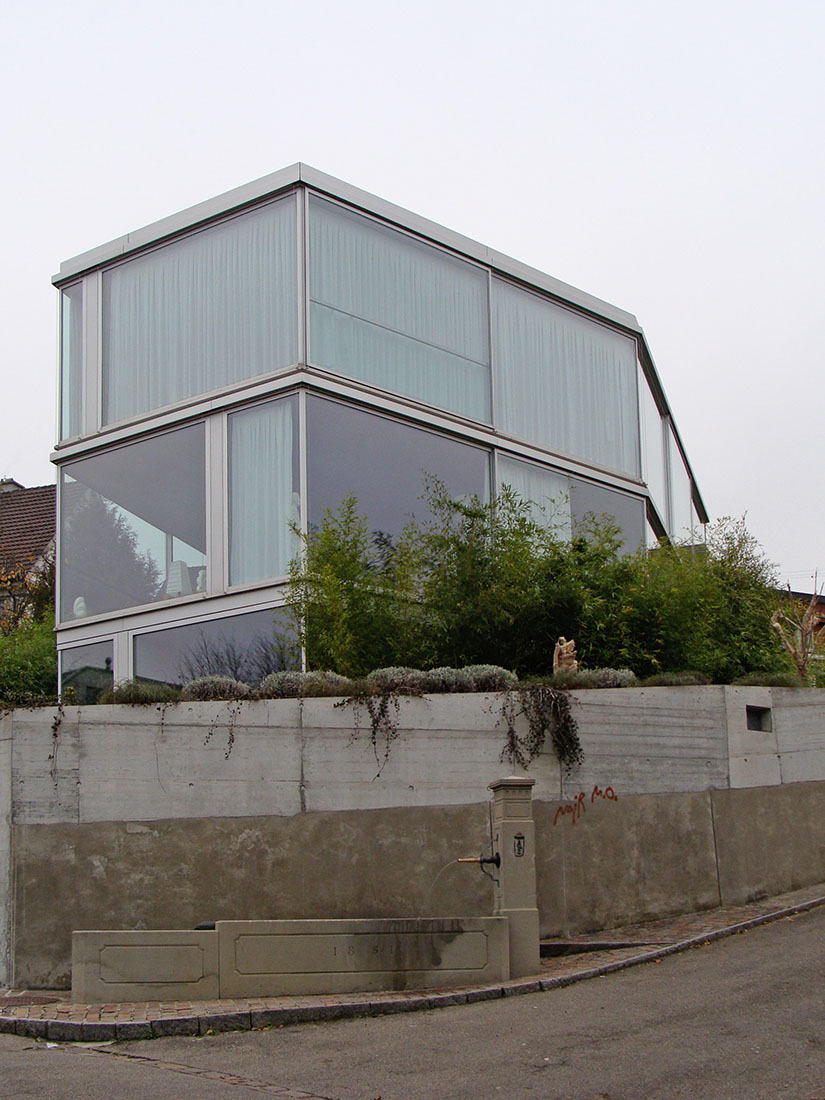 |
 |
 |
 |

House With One Wall
Burenweg 46 / 48, Zürich
2004 - 2007
Das Haus mit einer Wand, entworfen vom Architekten Christian Kerez, handelt es sich um ein Zweifamilienhaus auf einem kleinen Grundstück am Zürichberg. Das Gebäude wird durch eine Wand in zwei Hälften unterteilt. Bemerkenswerterweise handelt es sich bei der Trennwand um die einzige Wand im ganzen Haus. Diese Wand kann an keiner Stelle durchquert werden, und erfüllt Funktionen welche in konventionellen Zweifamilienhäusern von verschiedenen architektonischen Elementen übernommen werden. So ist diese Wand ist gleichzeitig statische Struktur und Installationskern. Die Faltungen der Wand definieren alle Räume und bestimmen wie der Ausblick aus den beiden Wohnungen im komplett verglasten Gebäude gelenkt werden. Durch die Reduktion der Architektur auf ein einzelnes Element und durch die Einfachheit des Konzeptes entstehen weitreichende Abhängigkeiten. Dadurch wird der Entwurf wiederum ausserordentlich komplex. Durch diese Abhängigkeiten wird der Entwurf stichhaltig und die Wand erhält ihren zwingenden Charakter, obwohl sie auch einem anderen Verlauf folgen könnte. Wie ein gefaltetes Stück Papier halt die Wand zwischen den zwei Einheiten Knicke, welche das Umkippen der Wand verhindern. Von Geschoss zu Geschoss sind die Faltungen unterschiedlich, so dass konvexe und konkave Räume von offenem oder geschlossenem Charakter entstehen. Die Form der Wand ist in der jeweils anderen Wohnung in das Gegenteil gewendet. Nischen und vorstehende Volumen bedingen sich Gegenseitig ebenso wie breite und schmale Räume. Im Grundriss zeigt jedes Stockwerk einen langen Raum, und trotz der beschränkten Geschossfläche entsteht der Eindruck von Grosszügigkeit. Trotz der geringen Dimensionen weiten sich die Räume aus, so dass das Gebäude von Innen viel grösser wirkt als von Aussen. In jeder Wohnung ist das Badzimmer der einzigen Bereich, welcher komplett geschlossen ist. Selbst dieses Bad entsteht aus der Logik der gefalteten Wand. Die raumhohe Schiebetüre der davor liegenden Einbaugarderobe ist als Fortsetzung der Wandscheibe konzipiert. Die Treppen der Wohnungen verlaufen entlang der Wand durch die gesamte Tiefe und Höhe des Hauses, und spannen von einem Ende zum anderen. Die Kaskadentreppen geben den Wohnungen räumliche Klarheit und Grosszügigkeit.
